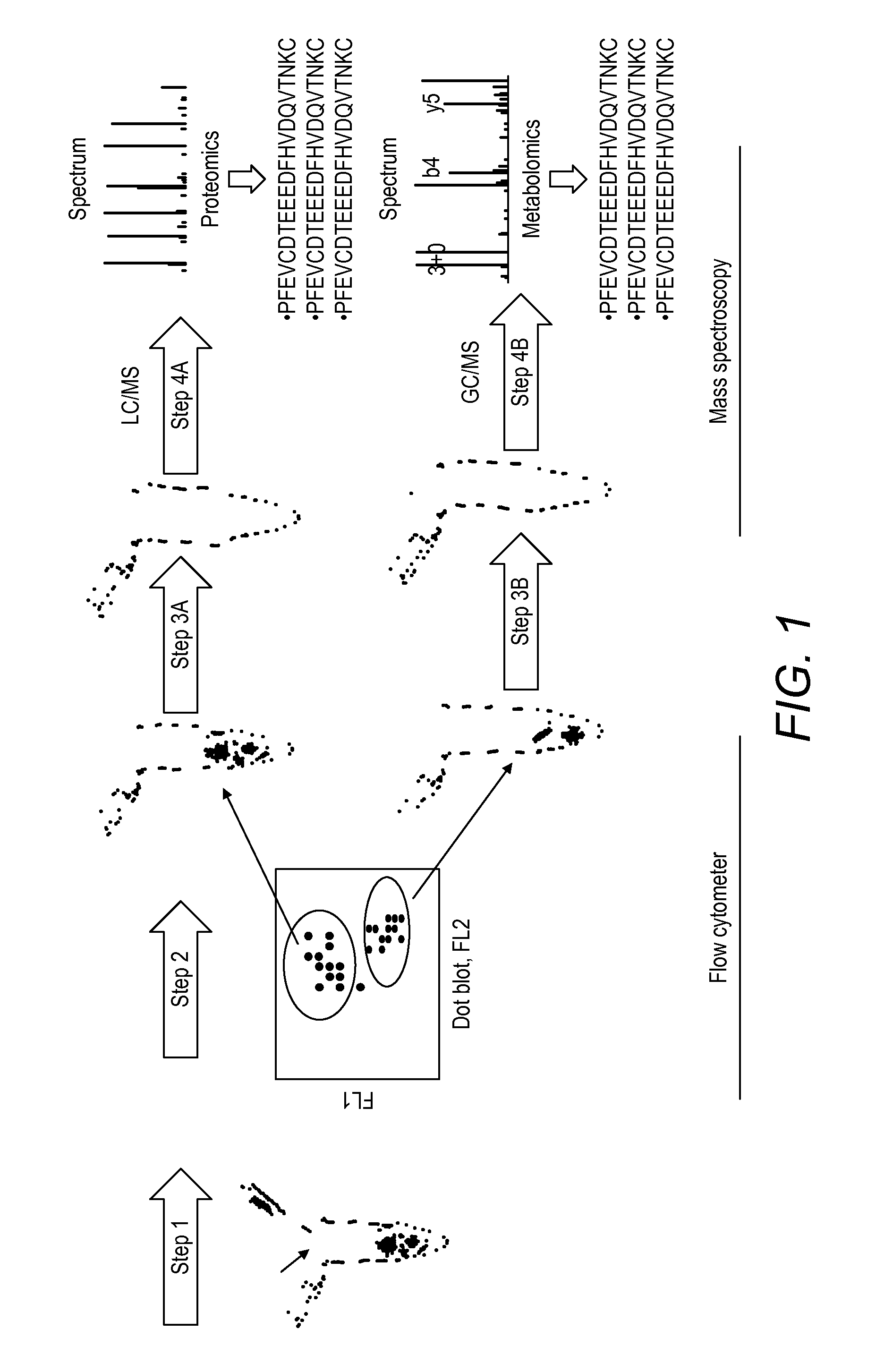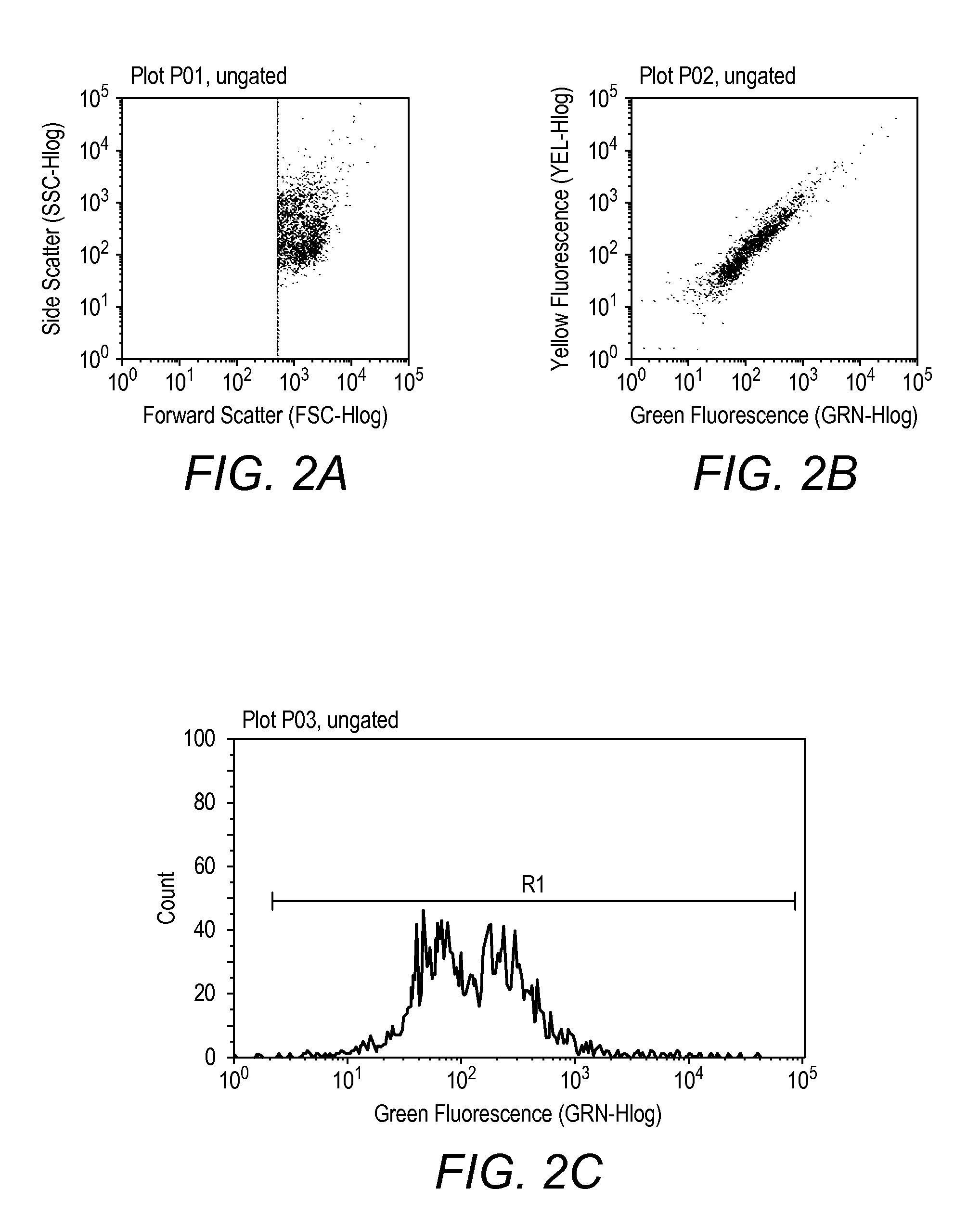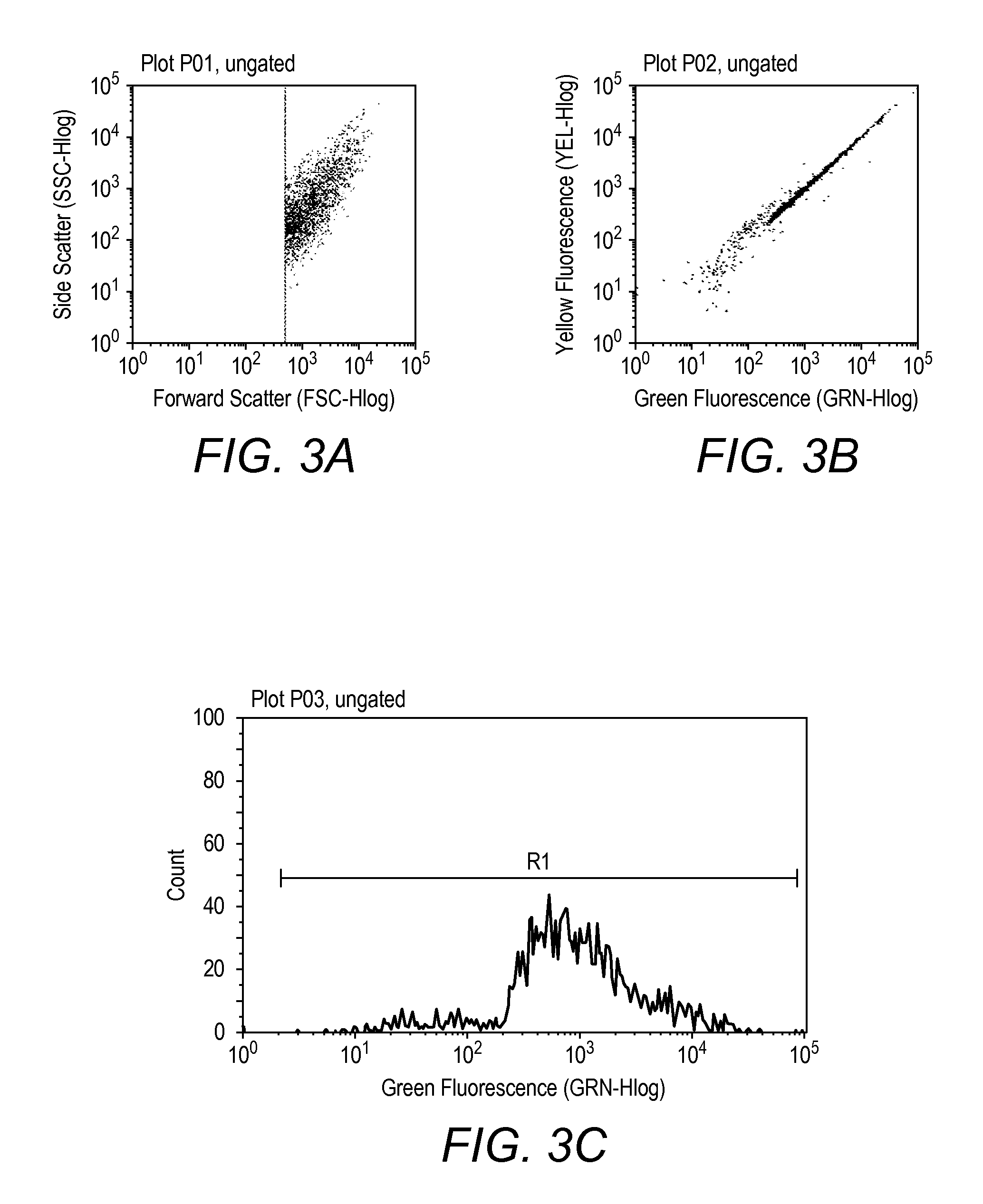Method, composition, isolation and identification of a plaque particle and related biomarker
a biomarker and plaque particle technology, applied in the field of method, composition, isolation and identification of plaque particles and related biomarkers, can solve problems such as fatal symptomatic events, and achieve the effect of reducing their pathogenic properties
- Summary
- Abstract
- Description
- Claims
- Application Information
AI Technical Summary
Benefits of technology
Problems solved by technology
Method used
Image
Examples
example 1
Overview of the Flow Cytometer and Mass Spectroscopy Based Biomarkers Identification Method from Plaque Particles
[0083]The Example illustrated in FIG. 1 includes both a schematic diagram and steps involved in the development of plaque array method in combination with Mass spectroscopy. This method involves steps for detection, quantitation, isolation, proteomics, glycomics, lipidomics and metabolomics analysis of plaque particles.
[0084]FIG. 1 represents a schematic of the Flow cytometer and Mass spectroscopy based detection, sorting and biomarkers identification in plaque particles. Step 1, in vitro formation of insoluble plaque particles in bio-fluids; step 2, Flow cytometer based identification and isolation of plaque particles; step 3A, trypsin digestion of the isolated plaque particles to prepare peptide fragments: step 3B, extraction of lipid or metabolites from plaque particles; step 4A, Mass spectroscopy (MS / MS) based proteomics and glycomics for identification of proteins / gl...
example 2
Flow Cytometer Based Detection and Quantitation of Abeta-42 Plaque Particles in AD Serum Sample
[0085]Amyloidosis is a group of more than fifteen neurodegenerative or protein aggregation diseases caused mainly by deposition of misfolded amyloid proteins or their derivatives in both intra cellular and extracellular regions of brain. The amyloid plaque related protein aggregation diseases include AD, PD, prion-mediated diseases, Tau pathies, HD, MS, type 2 diabetes and the like. Among them AD is the most common and serious neurodegenerative disease associated with progressive dementia caused mostly due to the deposition of Amyloid-beta (Abeta) peptides (Yankner 1996). Abnormal processing of the Abeta precursor protein is an early and causative event in the pathogenesis of AD (Selkoe D. J. 2003). Amyloid precursor protein (APP) undergoes a series of proteolytic cleavages culminating in production of Abeta-42 peptides and smaller peptides.
[0086]In order to examine abeta peptides based am...
example 3
Flow Cytometer Based Detection and Quantitation of Abeta-28 Plaque Particles in AD Serum Sample
[0088]To examine plaque particles formation in the AD patient serum sample, a different derivative of abeta peptide, Abeta-28, was used. Diluted serum sample was incubated with Abeta-28 oligomer / aggregates and after staining with Thioflavin S dye the samples were analyzed in Flow cytometer. As observed with Abeta-42 plaque particles formation described in example 2, the soluble form of aggregates are readily converted in to insoluble Abeta-28 plaque particles that are detected by the Flow cytometer. FIG. 3A shows Abeta-28 plaque particles detection in acquisition dot blot, fluorescence dot blot and histogram analysis. These results indicate that serum samples of AD patients contain molecules that can accelerate the synthesis of insoluble plaque particles from the undetectable plaque oligomers / aggregates.
[0089]FIGS. 3A, 3B and 3C shows a flow cytometer based detection of Abeta-28 plaque par...
PUM
 Login to View More
Login to View More Abstract
Description
Claims
Application Information
 Login to View More
Login to View More - R&D
- Intellectual Property
- Life Sciences
- Materials
- Tech Scout
- Unparalleled Data Quality
- Higher Quality Content
- 60% Fewer Hallucinations
Browse by: Latest US Patents, China's latest patents, Technical Efficacy Thesaurus, Application Domain, Technology Topic, Popular Technical Reports.
© 2025 PatSnap. All rights reserved.Legal|Privacy policy|Modern Slavery Act Transparency Statement|Sitemap|About US| Contact US: help@patsnap.com



